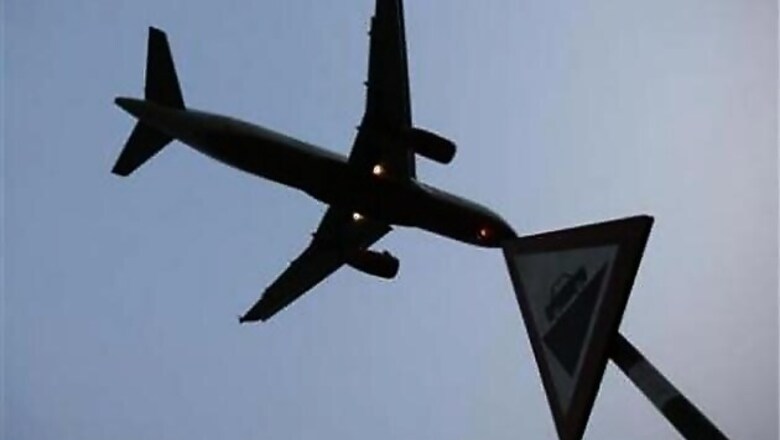
views
New Delhi: Government on Tuesday voiced concern over burgeoning losses of Indian airlines in spite of the high growth in air traffic but hoped that more carriers would take to the sky in 2015.
Addressing a meeting of Chief Ministers and state Civil Aviation Ministers, Civil Aviation Minister Ashok Gajapathi Raju said that despite high air traffic growth rate, "most of the airlines in the country are reported to have incurred losses and some airlines are struggling to stay afloat."
Expressing hope that the new year would bring a change on the growth trajectory of the industry, he said the government proposed to have "more new airlines in the coming year." Urging states to join the Centre in its initiatives to promote air connectivity, Raju said "the states understand the need to lower taxes. Some states have already come on board."
He said the government was also working on a package to promote connectivity and airports in the Northeastern states. Listing out the problems facing the sector, the Minister said the aviation industry was " seriously affected" by high operational costs including cost of aviation turbine fuel, service tax and other charges, shortages of maintenance facilities, high foreign exchange rate and competition from foreign airlines.
There is a high customs duty on import of private aircrafts and helicopters also, he said. Noting that aviation was acknowledged as a growth engine which has a force multiplier effect, Raju said as per global estimates, for every $100 worth of input, there is $325 worth of output generated.
For every 100 jobs created in the aviation industry, there are 610 jobs created in other industries, he said. Minister of State for Civil Aviation Mahesh Sharma said the Ministries of Civil Aviation, Tourism and Culture have to work together "to realise the great potential that India has in the civil aviation sector".
Raju said there was a major need to promote helicopter operations in the country to promote remote connectivity, as the number of helicopter population has not improved in recent years, while the number of small aircraft and seaplanes had also remained stagnant.
"The real challenge is to manage phenomenal growth of air traffic with safety. The increase in air traffic has not only increased the demand for aircraft but also posed a challenge to meet the airport and air navigation infrastructure to ensure safe, orderly and efficient operations," the Minister said.
At the meeting, Punjab's Aviation Minister Vikram Singh Majitha said the Punjab Cabinet was considering reducing the taxes on Aviation Turbine Fuel (ATF) to four per cent very soon.
Currently, the state levies a tax of 5.5 per cent on jet fuel which would be reduced to 4 per cent soon, he announced. A senior official of Uttarakhand also indicated that the state planned to further reduce the taxes on ATF. With this the number of states lowering taxes on ATF was going up, with Chhattisgarh and Andhra Pradesh having already lowered taxes which stood at four and one per cent respectively.
The sales tax on ATF varies from one per cent in Andhra Pradesh to over 30 per cent in Kerala. Jet fuel constitutes nearly 40-50 per cent of the operating cost of an airline. Earlier, the Minister said the civil aviation sector has grown steadily at the rate of 13.8 per cent in the last 10 years.
Though the rate of growth came down during the last two years due to the overall economic slowdown, "it is recovering fast, with the year 2013-14 showing a growth of six per cent." He said there was an "impressive" growth in international and domestic trade over past few years which has augured well for the air cargo industry.
However, he said India's current share of air cargo compared to other modes of cargo- transportation was fairly low.



















Comments
0 comment